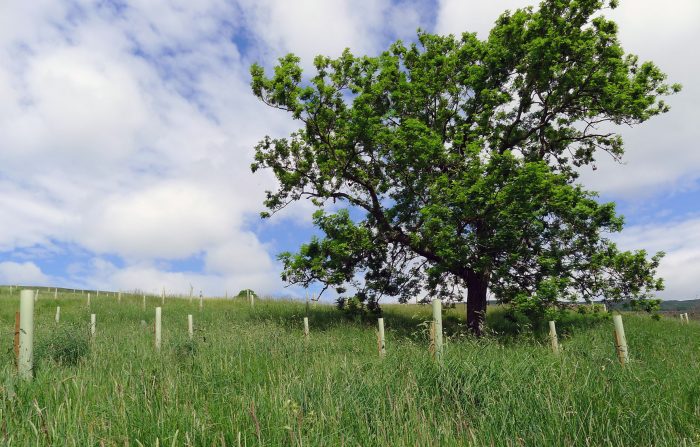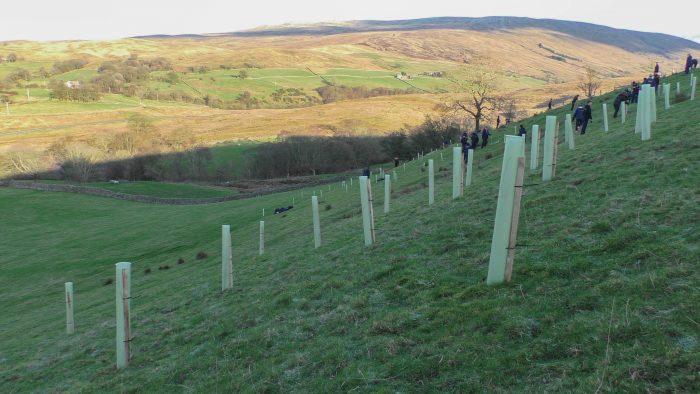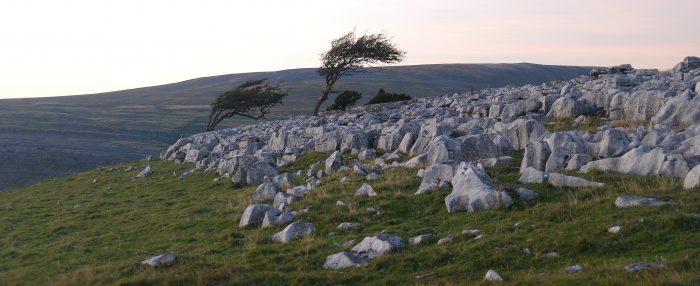Woodlands – we answer your questions
August 14, 2020
We hosted our first ever Q&A on Twitter recently explaining our role in woodland creation and making sure we place the right tree in the right place.
Thanks to everyone who posted questions. Our woodland officer Carol Douglas answers your questions below!
“What difference can one tree make?”
Every single tree provides a multitude of benefits whether standing alone or in a woodland.
If we take the example of an ash tree and just think about biodiversity – there are more than 47 different ground flora species associated with this tree, many of which are threatened. Other organisms that benefit are – Birds, Mammals, Bryophytes, Fungi, Lichens, and Invertebrates – of which there are 955 associated species with Ash. This is before giving consideration to other benefits we gain such as shade, beauty, landscape enhancement, prevention of erosion, flood mitigation and carbon capture.
“I’d love to know what the alternatives are to plastic guards?”
Currently there are very few alternatives to plastic guards that have been trialled and tested and shown to be successful. We are working with others in the forestry sector to encourage manufacturers to produce a guard that would compost on site but there is nothing on the market yet.
Have a look at the report produced from a workshop YDMT organised to bring manufacturers and those with the forestry sector together to discuss the issue and there was a presentation on some of the alternatives that have been tried.
There is always the option of deer fencing and not using any guards although spiral vole guards may often still be required. There are biodegradable vole guards but these must also be removed from site to enable them to compost. Another option is to use strong wire mesh and a large wooden post. This is a more expensive option than a plastic guard but can often look less intrusive in the landscape. If you are thinking about what protection your trees will need it is worth reading the recently produced guidance from the Forestry Commission.

“What are the trees to plant in an area that floods?”
Willow and alder are the best trees to cope with flooding and downy birch also grows well in wet woodlands. There are lots of different species of willow but the key species common to native woodlands in the Dales are Goat willow, Grey willow and Crack willow. Have a look here if you’d like to find out more about these trees.
“Which trees are “most needed” right now – do you try to plant more Ash to counteract losses from die-back?”
A plant health order introduced in 2012 has prohibited the movement and planting of Ash trees in the UK. This was to reduce the spread of the disease that has now unfortunately reached every part of the country. It was originally estimated that 90 – 95% of all Ash trees would die. More recently however, it is thought that a higher percentage of trees are showing resistance to the disease and so the survival rate has increased. There is no doubt that here in the Dales, Ash dieback will have a huge impact on our woodlands and landscape.
There is no one tree that can replace ash. It is strongly recommended to plant a rich variety of species to increase the resilience of our woodlands and to create a variety of habitats to mitigate the impact the loss of these trees will have. Small leaved lime, aspen, alder, birch, rowan and oaks, are possible alternatives. If you would like to find out more about the ecological impact of ash dieback and detailed information on replacement trees click here.
“There’s a lot of talk about right tree right place at the moment, how does YDMT ensure that happens?”
YDMT works very closely with the YDNPA, Nidderdale AONB and Forest of Bowland AONB. Before a woodland scheme is approved a constraints check will be undertaken to see if there are any conflicts in creating woodland on the land. For example, if the site has any archaeology present, or if it is herb rich grassland or a site that is important for priority bird species such as curlew or waders, then the planting would not be approved. Outside the designated areas we consult with the relevant authorities.
“How does YDMT select and work with landowners?”
YDMT is approached by landowners who would like to plant trees and so they come to us rather than the other way around. It is a partnership approach, we do not own or hold any land. You can read a case study of our supporter woodland at Low Branthwaites and how the partnership works with the landowners.

“We all love trees, but are there any arguments against tree planting and how do you deal with those?”
There can often be lots of conflicts associated with planting trees. Land is precious and in high demand. Very often people do not want trees near to their houses or blocking a view. Many highly valued landscapes have very few trees and people are resistant to planting where they consider the landscape will dramatically change.
Until I started working at YDMT I did not understand how difficult it could be to find space to plant trees. There are many constraints that often prevent planting such as if it is peatland, or bird habitat, or common land that cannot be fenced. The current farming subsidies have also prevented farmers from wanting to plant trees as they receive a payment for agricultural land that is grazed. This payment is lost if the land is converted to woodland.
It is hoped that the new Environmental Land Management Scheme being developed by the Government will change this.
“What is your favourite tree?”
Ooo, that’s a tough one! All trees have their special qualities.
I moved house recently and the garden was completely bare but I’ve really been struggling to decide what trees to plant. I’ve started with willow as they are fast growing and have provided lots of food for the birds. However, I’ve always had an appreciation for hazel and ash having got to know them better through coppice work and green woodworking. However, I think since moving to the dales I’d have to say that the hawthorn has become my favourite – and it’s not just because it’s the YDMT logo! It’s hardy, seems to survive almost anywhere, provides so much for wildlife and looks fantastic when in full flower. It is also always interesting in how it grows, and I love the fact that the young leaves can be added to salad and are good for the heart. In Celtic mythology the Hawthorn is the most magical tree and symbolises love and protection.

“How much carbon do trees lock away?”
This is a really tricky question because every tree and every woodland is so different. So many things affect how well a woodland absorbs carbon dioxide, from the species of trees planted, how many are planted and at what distance apart, to the soil conditions, and the weather conditions. Even things like tree protection and long-term woodland management have to be considered. We’ve worked at woodlands where a single tree can absorb 0.35 tonnes over 45 years, but other woodlands perhaps in higher areas of the Dales, may absorb much less. The figure we usually work with for a typical dales woodland is 6 trees can lock away a tonne of carbon over 50 years – but we always need to remember that for some trees it might be less, and for others it might be more!
“Do you have a favourite woodland?”
This is another tough question as all woodlands are amazing in their own way. However, I think my favourite would have to be the small patch of woodland that I visit most often. It’s about a 10-minute walk from my home in Ingleton, just downstream from New Bridge along the River Greta. It is a very small patch of semi – ancient natural woodland, that in spring is full of wild garlic and bluebells. There is quite a variety of trees, including bird cherry, guilder rose, hawthorn, blackthorn, and lots of old willow.
Unfortunately, as is the case with many of our semi-ancient woodlands, it is not being well looked after. The walls have fallen down and so the sheep get in and prevent any natural regeneration and many of the trees are struggling from the impact of high visitor use.
“How do we get involved in tree planting?”
Sign up to our nesletter to hear about our tree planting and other woodland events and activities.
You can also find out about dedicating a tree with us or visit our Frequently Asked Questions page for more answers to your woodland questions!






